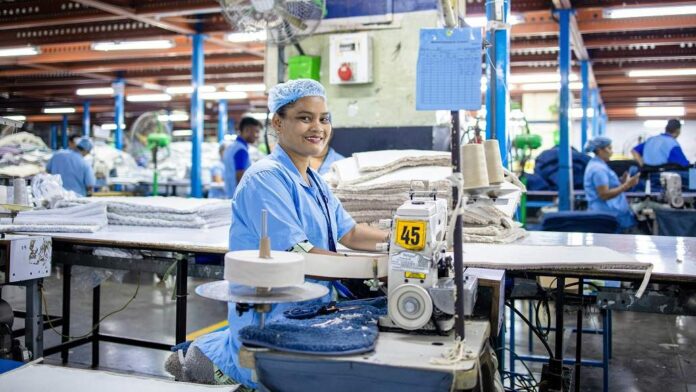India’s textile exports have seen notable year-on-year growth across 111 countries from April to September 2025, reflecting a strategic shift to lessen dependence on the U.S. market. This transition has been supported by a government-led outreach program focusing on 40 priority nations, with 38 of these markets reporting over 50% growth in imports of Indian textiles, as detailed in a recent report.
A key driver of this diversification is the India-UK Free Trade Agreement (FTA) signed in July 2025, allowing duty-free access for 99% of India’s textile and apparel exports. This preferential access is expected to increase textile exports to the UK by 30-45% by 2030 and could help double India’s share in the UK’s home textiles market within three years.
While the textile sector is on the path to expansion, it faces significant challenges in a turbulent global landscape. The U.S. has imposed steep tariffs of up to 50%, resulting in effective rates of 63.9% on textile and apparel imports from India. This scenario has compelled the industry to broaden its global footprint and seek momentum in new markets.
India’s increasing global presence is bolstered by strong domestic fundamentals. Valued at $174 billion in FY25, the textile sector is projected to grow to $350 billion by FY31, achieving a compound annual growth rate (CAGR) of 12.4%. However, sustaining this growth in India’s textile exports requires a more stable global trade environment, especially in the U.S.
An important transformation is also occurring in the sector through the rapid growth of technical textiles, now its fastest-expanding segment. The market is projected to jump from $29 billion in 2024 to $123 billion by 2035, driven by applications in healthcare, mobility, defense, and infrastructure. Technical textile exports hit $2.9 billion in FY25, expanding at an 8% CAGR, with Packtech and Indutech comprising nearly two-thirds of total export volumes.
In addition to this, India’s domestic fashion consumption is evolving quickly. Online apparel sales are expected to grow by 17% in FY25, with a CAGR of 15% ongoing until FY30, as quick commerce makes its debut in the fashion sector. India’s allure as a market for global retailers remains strong, evidenced by the entry of 27 international brands in 2024, which is double the number from the previous year.
The growth in India’s textile exports is accompanied by a surge in the number of DPIIT-recognized textile startups, which increased 3.7 times between 2020 and 2024. Apparel startups collectively raised $120 million by October 2025, showing a 2.6% year-on-year rise.
As the textile sector ranks as the second-largest employer in the country, the government is committed to counteracting global volatility through several supportive measures in the latter half of 2025. These include the removal of quality control orders on key polyester raw materials, which had increased costs by nearly 30%, a ₹450 billion export support package, and an extension of duty-free cotton imports until December 31, 2025. This support comes during a period of sharp decline in domestic cotton production, dropping from 386 lakh bales in 2014-15 to 294.25 lakh bales in 2024-25, with imports nearly doubling in the same timeframe. Additionally, clarity on BIS contamination standards is still awaited, adding to exporters’ concerns.
Overall, the growth in India’s textile exports reflects a complex landscape shaped by tariffs, shifting global demand, sustainability pressures, and intense competition. However, the industry is adapting with agility, moving into new markets, investing in advanced technology, and integrating sustainability into its practices. As India aims to become a more competitive textile hub, sustained investment in innovation, technology adoption, raw material security, and sustainable manufacturing will be essential for continuing this growth. With increasing export diversification and expanding digital retail channels, the country’s textile industry is poised to drive the next phase of manufacturing-led growth.


































